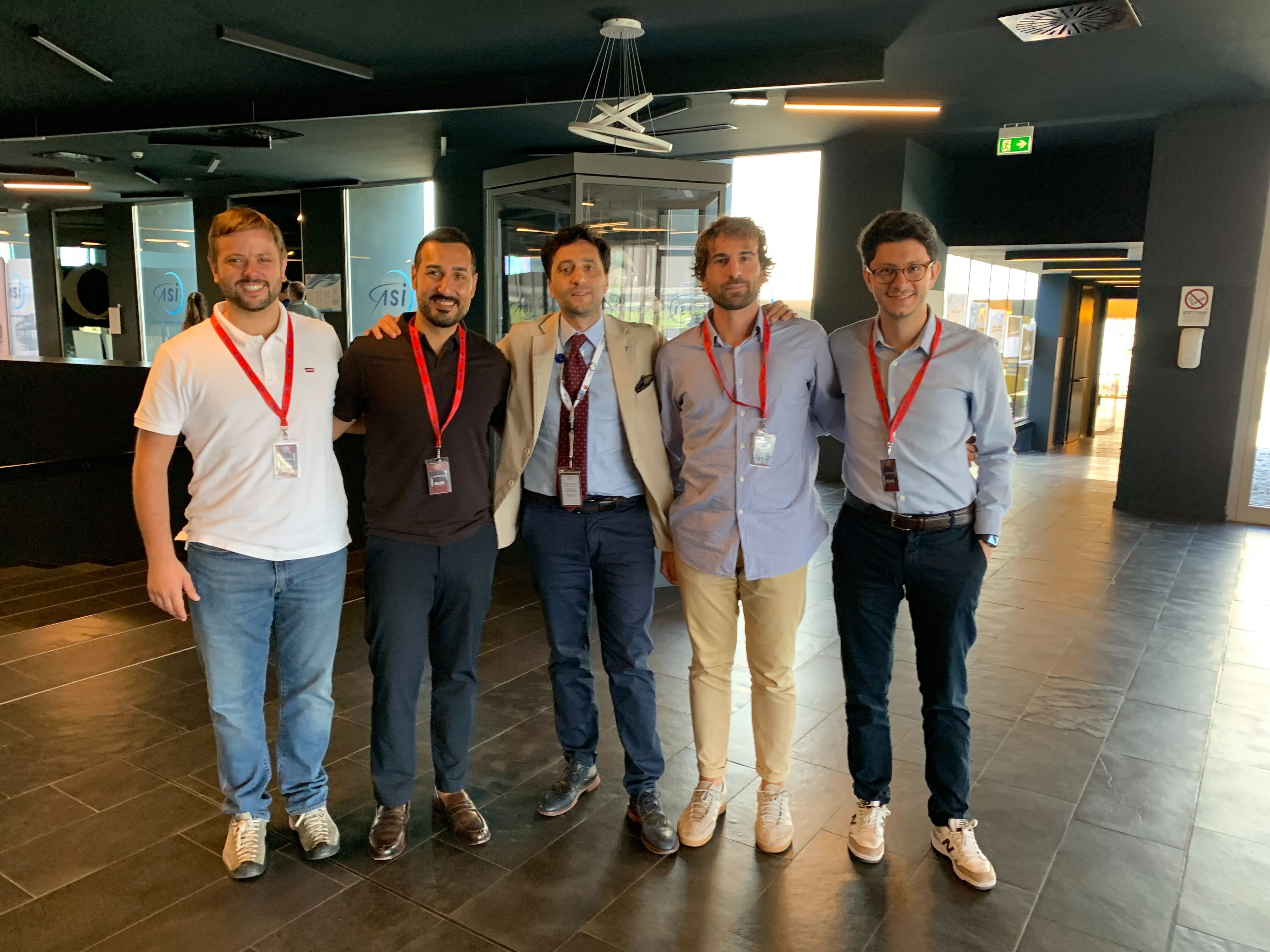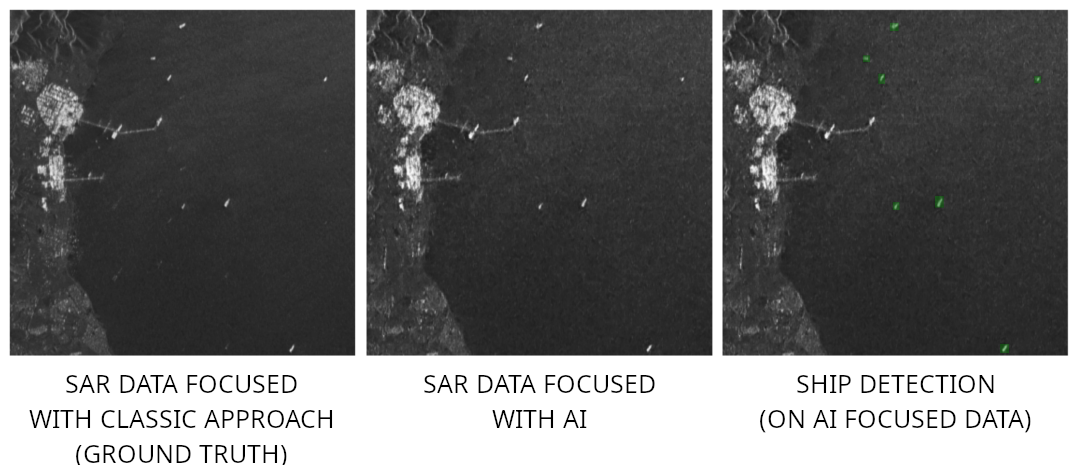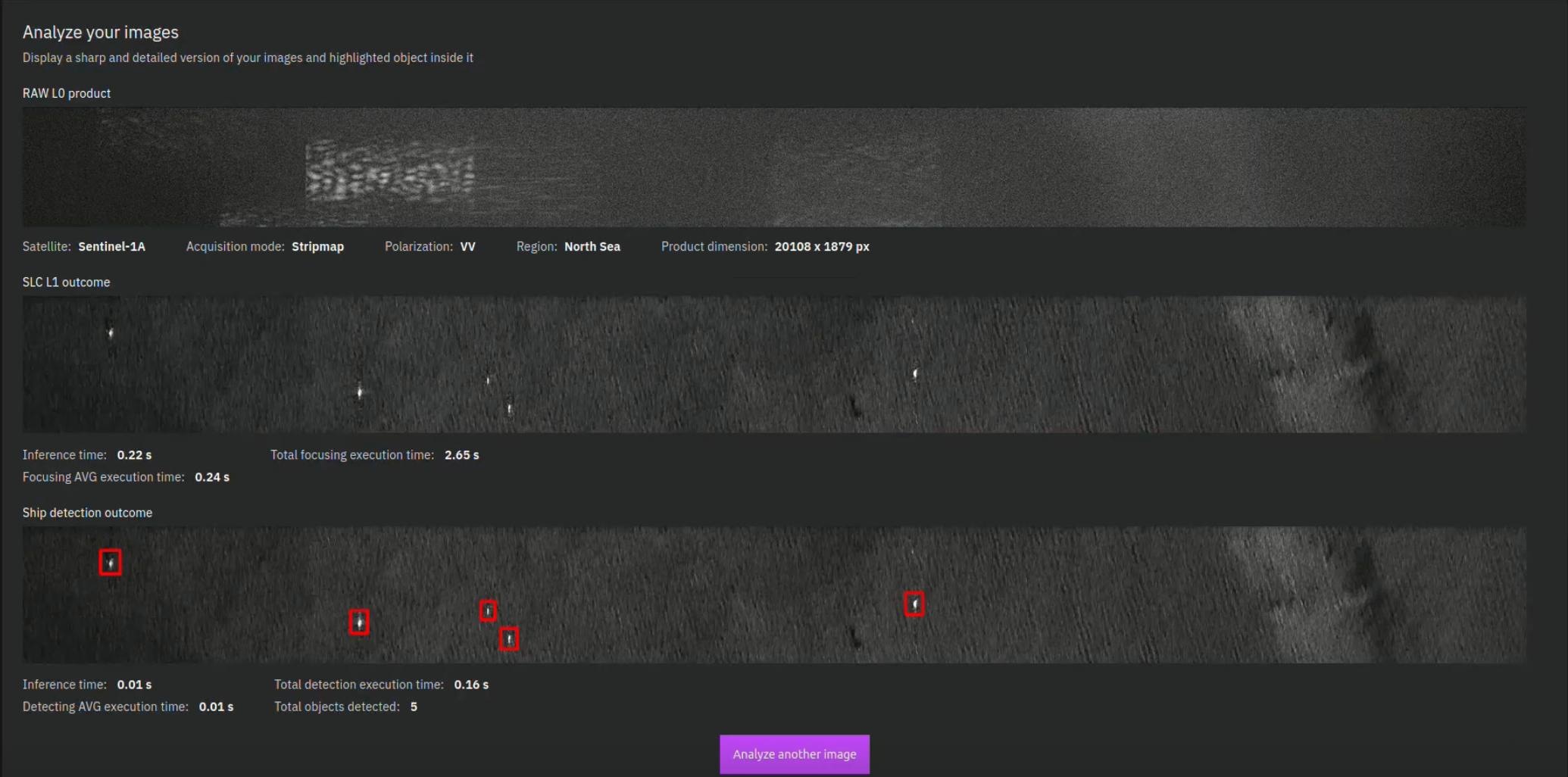
AISAR
TRANFORMING THE WAY WE SEE EARTH
The AISAR project (Artificial Intelligence for Synthetic Aperture Radar), funded by the Italian Space Agency (ASI), represents a major milestone in advancing onboard intelligence for radar satellites. It builds upon the achievements of the DeepSAR project, carried out in collaboration with the European Space Agency (ESA). Together, these initiatives highlight AIKO’s expertise and unwavering commitment to pioneering onboard processing of Synthetic Aperture Radar (SAR) data.
Within AISAR, AIKO led the design and integration of the core technology, implementing and validating the end-to-end pipeline supported by Geo-K s.r.l. The project successfully demonstrated that complex SAR image processing can be performed directly onboard spacecraft, reducing dependence on ground infrastructure and laying a solid foundation for autonomous space-based Earth observation.
The Earth Observation challenge and how to unlock it
Synthetic Aperture Radar (SAR) is a remote sensing method that allows to capture high-resolution images of Earth. The processing of SAR data turns images into high-value assets, returning clear insights that can be used in several critical contexts.
However, this is by no means a straightforward action. Traditionally, raw SAR data are sent to Earth for processing, implying a costly, bandwidth-heavy approach that slows access to vital information.
This is what made the AISAR project so crucial: it directly addressed the challenge of processing radar data in space, leveraging imagery from COSMO-SkyMed, Italy’s dual-use X-band SAR constellation. This expanded upon the DeepSAR project that leveraged data from Sentinel-1, showcasing our capabilities in handling data from different radar frequencies, respectively X-band (COSMO-SkyMed) and C-band (Sentinel-1).
The "how" behind AISAR: approach and innovation
SAR FOCUSING
At the heart of AISAR lies the focusing stage, the most technically demanding and strategically crucial part of the entire project. Focusing is what transforms raw radar echoes into interpretable images, the essential step that enables any meaningful analysis.
AISAR combined traditional and AI-based methods:
- Traditional range compression for enhanced reliability
- Deep Learning for azimuth compression for enhanced efficiency and adaptability
This approach allowed to perform the focusing directly onboard. This way satellites can process SAR data autonomously, generating actionable images without waiting for ground intervention.
REAL-WORLD SCENARIO: ONBOARD SHIP DETECTION
To demonstrate the operational impact, a ship detection model was implemented using a state of the art Convolutional Neural Network (CNN), namely the YOLO architecture. It enabled us to:
- Balance accuracy and inference speed
- Guarantee reliable detection without compromising responsiveness
- Overcome computational constraints through a lightweight design
The system identifies vessels in SAR imagery and downlinks only the detections rather than the entire image, proving the viability of real-time maritime domain awareness, directly from orbit.

*Copyright AIKO
AI BASED COMPRESSION
A Neural Network structure was developed to compress data while preserving fidelity. This allows satellites to downlink compact, high-quality information reducing data volume by a compression ratio (CR) of eight. Quantitative tests showed very high similarity scores, confirming that essential details and structures remain intact after compression and decompression.
Results that redefine what's possible
AIKO is proud to confirm that AISAR delivered concrete, validated outcomes:
- Onboard SAR focusing that maintains radiometric and geometric accuracy.
- Operational ship detection proven effective for maritime awareness.
- Successful deployment on space-ready hardware since AISAR and DeepSAR were tested and benchmarked on Xilinx's FPGA and Nvidia's GPU, confirming feasibility in power- and radiation-constrained environments.
- AI-driven compression achieving 8x (CR) reduction with near-perfect reconstruction.
The EO future is onboard: setting a new standard
With the successful conclusion of AISAR, we proved that satellites can act as autonomous partners in Earth Observation and not just passive data collectors. This achievement goes beyond the mere research advancements, marking the establishment of a paradigm shift in how satellite missions are conceived, operated, and valued. A paradigm shift where AIKO takes central stage.
AIKO is driving this transformation. AI onboard is no longer an experiment, it’s the future standard.
Building on DeepSAR and AISAR’s success, we are preparing for in-orbit demonstrations on CubeSats and hosted payloads, expanding applications from maritime awareness to disaster management, infrastructure monitoring, and environmental analysis. The focus is also set on optimizing our inference pipelines across different radar acquisition modes, ensuring robustness, adaptability, and scalability.
As Europe and Italy invest in next-generation SAR missions, AIKO stands at the forefront: ready to turn these ambitions into operational reality.
